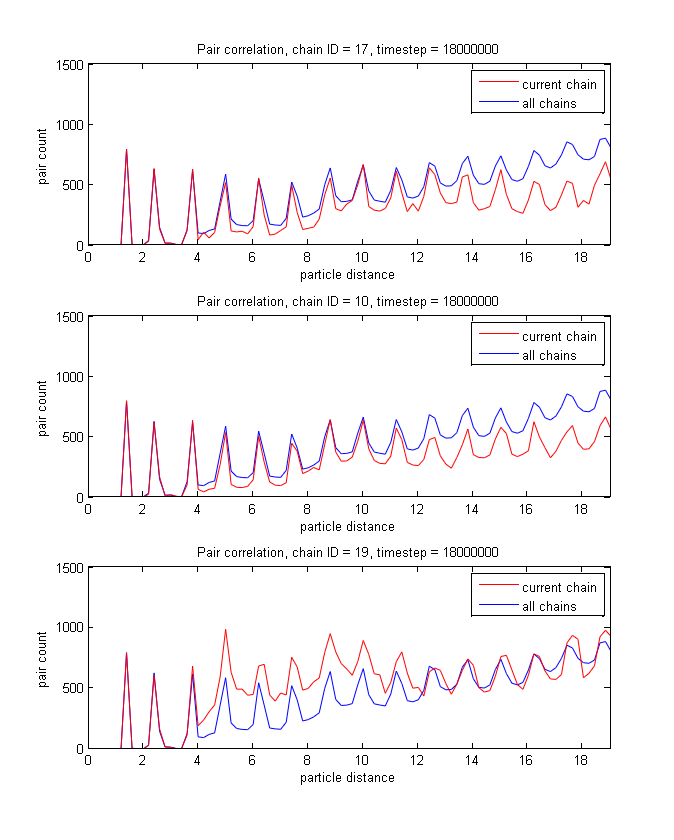Detecting Chain Similarity through Pair Correlations in PCA Space
Procedure to Detect Chain Similarity and Diversity
-
Pair correlations were performed for each chain in the first time-step of a constant-volume uniaxial-tension PEMD simulation.
-
To prepare for PCA, the pair correlation bincounts were represented as row vectors and concatenated into an array. Each column of the array was then normalized by its mean. This array was then used to calculate the PCA basis. The pair correlation results were then represented as points in the PC space.
The following plot shows the 20 chains for the first time-step in the pc1 and pc2 components

-
A reference chain was randomly selected (chain 17). The chains with the minimum and maximum Euclidean distance in all principal components from the selected chain were identified (chains 10 and 19 respectively). Chains separated by a small Euclidean distance in PC space are expected to be similar, while pairs separated by a large distance are expected to be structurally different.
The following plot shows the pair correlations for the reference chain, the minimum PC distance chain and the maximum PC distance chain. Each individual pair correlation is plotted versus the average pair correlation for all chains.

The following image shows the structures of the reference chain, the minimum PC distance chain and the maximum PC distance chain.

Conclusions
From the preceding images it appears that the Euclidean distance between chains is a good qualitative measure of chain similarity (where pair correlations are used as representations of the chain structure). More investigation will be needed to verify this observation, and to connect this to some measure of crystallinity.
Acknowledgements
Dr. Tony Fast for ideas and encouragement
References
- Dong, X. et. al. Dependence of mechanical properties on crystal orientation of semi-crystalline polyethylene structures. Polymer 55 (2014) 4248-4257.
- Dong, X. et. al. Effect of network structure from different processing conditions on the mechanical property of semi-crystalline polymers. MRS Symposium, 1619, 2014.